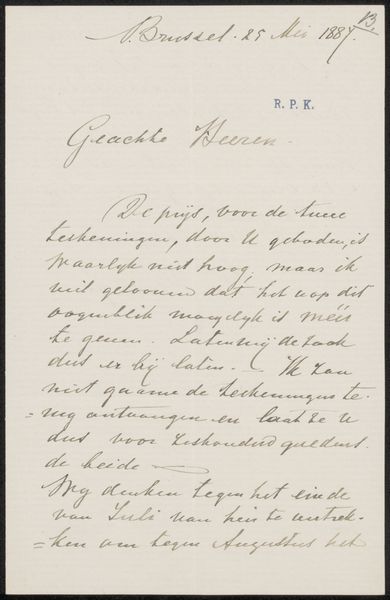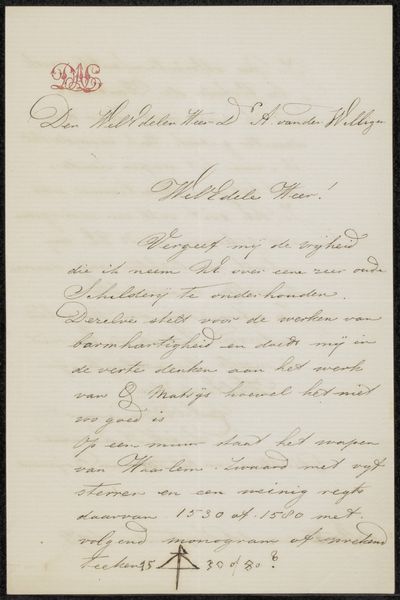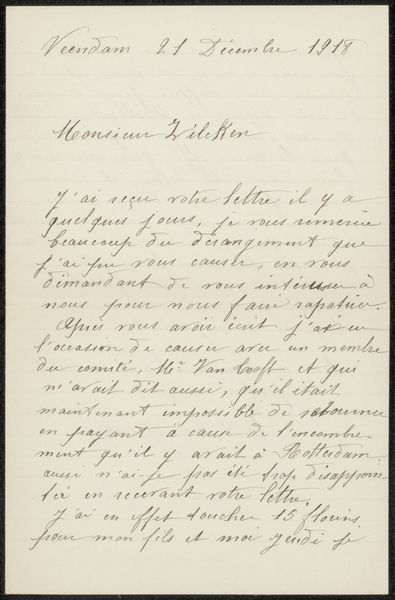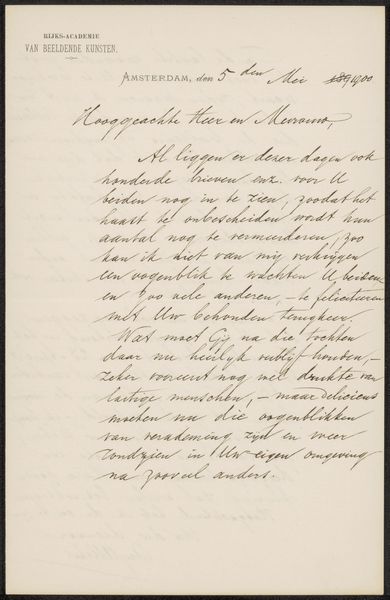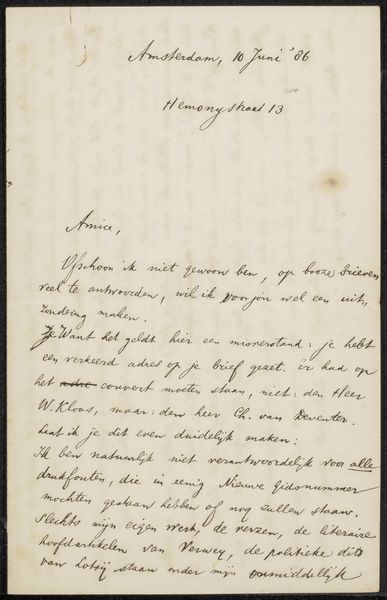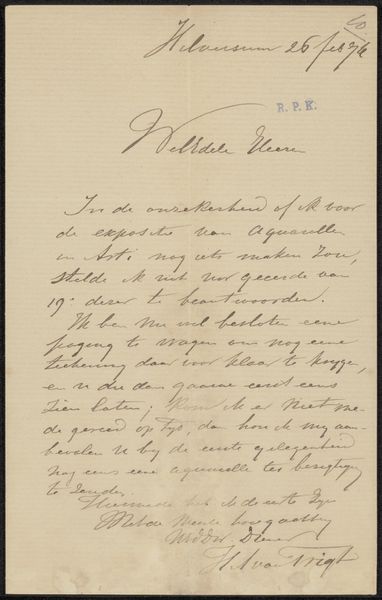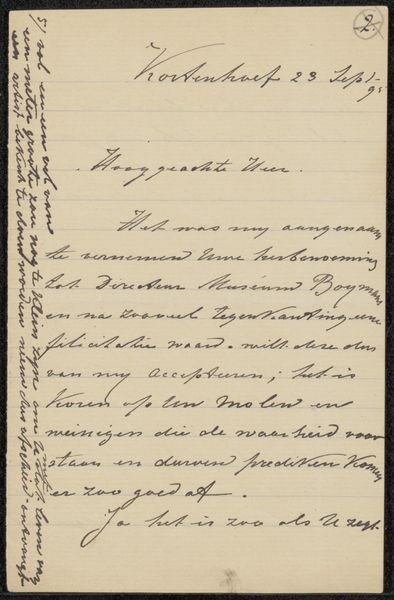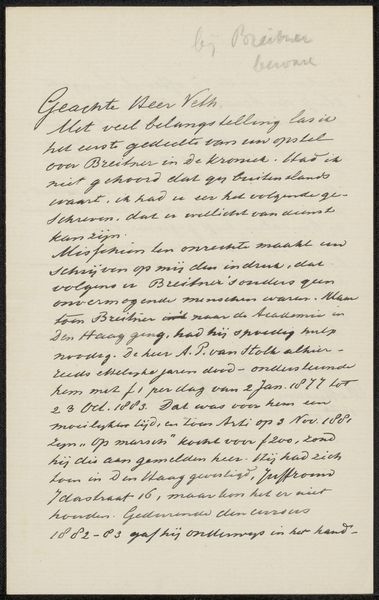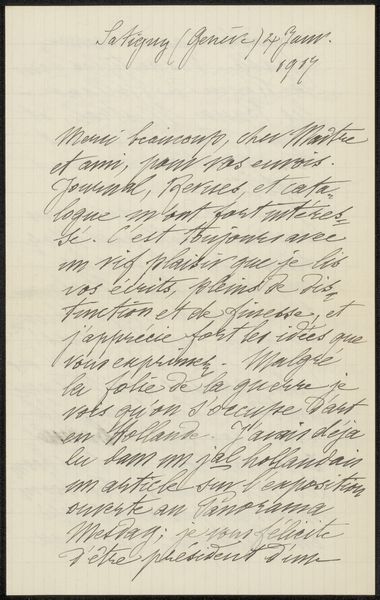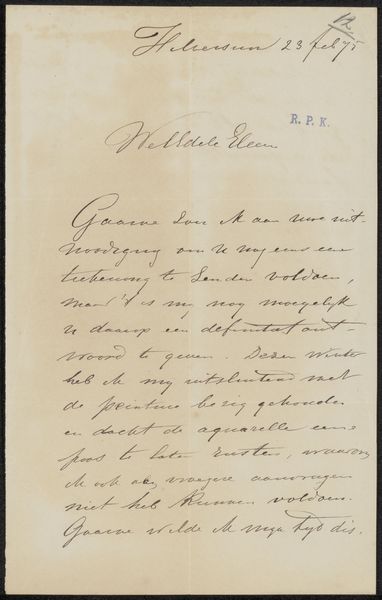
drawing, paper, ink
#
drawing
#
script typography
#
old engraving style
#
paper
#
ink
#
pen work
#
handwritten font
#
academic-art
#
calligraphy
Copyright: Rijks Museum: Open Domain
Jozef Israëls made this copy of a letter to Samuel van Houten in 1894, using paper and ink. Although these materials are conventional for writing, their use here connects to broader questions of artistic labor and social advocacy. The paper itself, likely mass-produced, speaks to the increasing accessibility of writing materials during the late 19th century. Ink, a mixture of pigment and binder, would have been readily available. Israëls' choice to create a copy suggests a deliberate act of preservation, a careful transcription meant to highlight its contents. The act of handwriting itself, a skill cultivated through education and practice, imbues the letter with a personal touch. Consider the social context: Israëls, a prominent painter, writes to a government minister. The letter's content, concerning the placement of paintings in the Rijksmuseum, underscores the intersection of art, politics, and national identity. The labor involved in producing this copy is minimal, yet it signifies a conscious effort to engage with power structures and advocate for artistic values. Ultimately, this letter serves as a reminder that even seemingly simple materials and processes can carry significant cultural and political weight. It blurs the line between artistic expression and social commentary, challenging us to reconsider the boundaries of art itself.
Comments
No comments
Be the first to comment and join the conversation on the ultimate creative platform.
